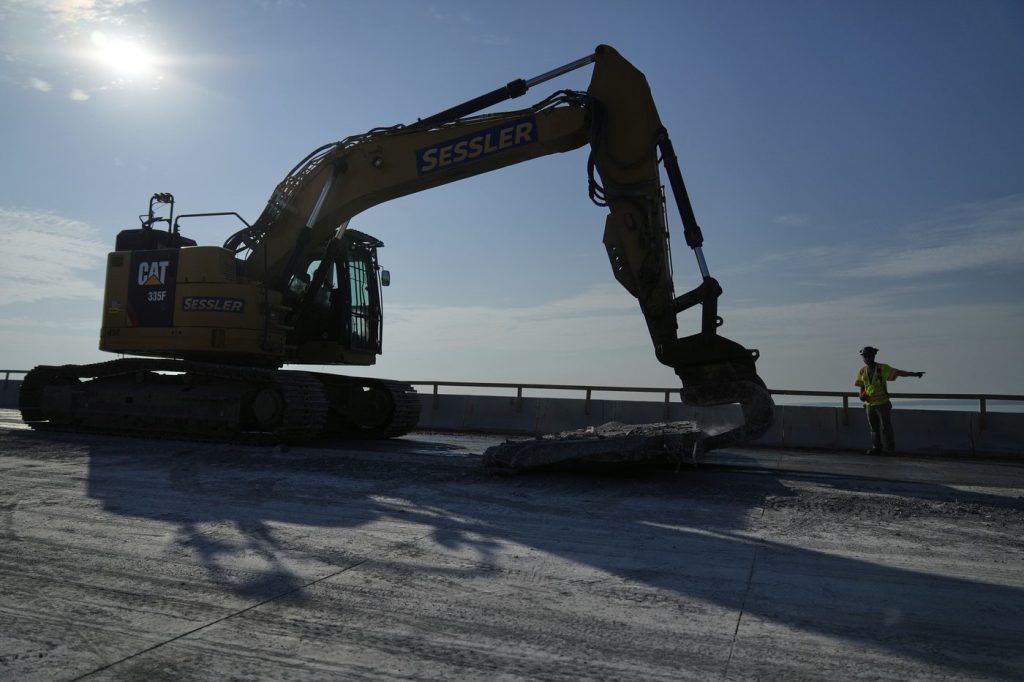BALTIMORE (AP) – Demolition crews are currently engaged in the task of dismantling the remaining sections of Baltimore's Francis Scott Key Bridge. The bridge had tragically collapsed on March 26, 2024, after a container ship lost power and veered off course, leading to the death of six construction workers who were working on pothole repairs at the time of the incident. The ongoing demolition involves the use of giant saws, backhoes, and other heavy machinery to remove large concrete segments of the bridge.
The design for the replacement bridge was unveiled earlier this year, and it is anticipated to open to traffic in 2028. Construction of the new bridge will occur simultaneously with the demolition of the existing structure, allowing for a more efficient transition in transportation infrastructure. Maryland Governor Wes Moore visited the worksite recently, expressing his appreciation for the swift and safe progress being made while also remembering the lives lost in the collapse.
Governor Moore stated, "We wanted to move as quickly as possible. We wanted to move as safely as possible, and we wanted to make sure we were being good stewards of taxpayer dollars." The collapse not only resulted in a tragic loss of life but also severely affected local traffic and operations at Baltimore's port, which was closed for several months as a result of the incident. The aftermath has led to ongoing traffic congestion issues, which officials are actively trying to address.
The Francis Scott Key Bridge was a significant landmark for Baltimore, providing a critical transportation link that allowed drivers to bypass the downtown area. The original bridge, spanning 1.6 miles (2.6 kilometers), was constructed over a period of five years and was opened to traffic in 1977. This infrastructure played a vital role in supporting the operations of the city’s port.
In efforts to ensure the new bridge is more resilient than its predecessor, the upcoming replacement will incorporate a cable-stayed design. This new bridge will be taller and better protected against potential maritime strikes, which had been a concern with the original Key Bridge.
Demolition crews are tasked with carefully cutting the concrete deck into 6-foot (1.83-meter) sections. These sections will be transported away for recycling, as part of the efforts to manage the demolition sustainably. Brian Wolfe, the director of project development for the Maryland Transportation Authority, indicated that the current phase of the demolition process is expected to take approximately nine months.
While demolition efforts continue, crews will also be performing tests to verify the foundation design for the new bridge. Officials have acknowledged that the project, which has an estimated cost of $1.7 billion, is undergoing reevaluation to take into account supply chain issues, tariffs, and other rising costs that may impact the budget and schedule for completion of the new bridge.
As the focus shifts from demolition to building the future structure, Baltimore’s hopes for enhanced transportation and safety continue to unfold amidst the ongoing project.










